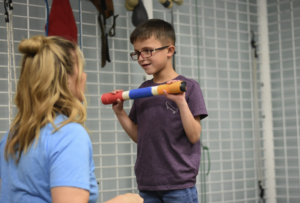For children, especially those with sensory sensitivities associated with autism, ADHD, and sensory processing disorder, a consistent routine can provide a vital sense of security. While some children may find a change in routine exciting, others might find it distressing, struggling to maintain a calm and stable state. This is particularly true for children who are still developing their understanding of time. Unlike adults, young children do not organize their lives by hours and minutes; they structure their world around the events that happen in their daily routine. When these events occur in a predictable pattern, children can better understand their environment and feel secure.
This blog aims to guide parents in understanding the importance of routines, how they impact children’s development, and practical strategies for establishing effective routines at home. We will also explore the balance between maintaining consistency and building flexibility to help children adapt to the inevitable changes that life brings. If your child consistently struggles with routine changes, seeking an Occupational Therapy (OT) screening might be beneficial to address any underlying issues.
Why Routines Matter
Routines play an essential role in children’s development, particularly for those with sensory sensitivities. They provide structure and predictability, helping children understand concepts such as “before and after” or “first, then.” When children experience events in a predictable order, it strengthens their sense of security and helps them learn to organize time without using clocks.
By establishing a routine, parents can help children:

- Practice simple predictions and feel secure in their environment.
- Build responsibility and independence through repeated activities.
- Develop skills like self-regulation by associating specific activities with emotions or behaviors (e.g., bedtime routines for winding down).
The Importance of Flexibility
While routines are beneficial, it’s equally important to strike a balance between predictability and flexibility. As children grow, they need to develop the skill of adjusting and adapting to changes, since change is a constant in our busy world. Children who become too dependent on rigid routines might struggle when unexpected changes occur, leading to distress or behavioral challenges.
To foster adaptability, parents should model calmness when disruptions happen and prepare children for transitions. Showing children that change can be managed calmly helps them build resilience and the skills needed to handle life’s fluctuations.
Practical Tips for Establishing Effective Routines
Here are some strategies parents can implement to create a balanced and effective routine for children:
- Morning Routine: Establish clear and simple steps for your child to follow each morning. This could include tasks like going to the bathroom, brushing their teeth, and putting on clothes. Morning routines encourage responsibility and provide a predictable start to the day.
- Calming Bedtime Ritual: Create a bedtime routine that helps children wind down. This may include activities like taking a warm bath, reading a story, or listening to soft music. Bedtime rituals signal to children that it’s time to prepare for sleep and can help them associate these activities with relaxation.
- Preparation for Transitions: Children often struggle with transitions, so incorporating time-based cues into their routine can be helpful. Indicating the time remaining before ending or starting a task (e.g., “We have 5 minutes left before we clean up”) can ease anxiety. A visual timer can be particularly effective for showing the remaining time and helping children understand the concept of time passing.
- Visual Schedules: Using visual schedules can be an excellent tool for promoting self-sufficiency. By arranging pictures of daily activities in sequential order, children can easily follow along and know what to expect next. Place the schedule in a visible location, like their room, so they can refer to it throughout the day.
Although consistency is key, it’s important not to be overly rigid. Show your child that small changes are okay by calmly explaining the change. For example, say, “I know we usually do __, but today we’re doing __ because [reason].” When children see you model calm behavior, it reassures them and teaches them to handle similar situations with confidence.
Why Occupational Therapy May Be Needed
If your child frequently struggles with changes in routine or demonstrates distress when their schedule is disrupted, it may be helpful to seek an OT screening. An occupational therapist can evaluate if there are underlying sensory processing challenges contributing to these behaviors and provide tailored strategies to support your child’s development.
Implementing consistent routines early in a child’s life provides a foundation for better organization, reduced stress, and long-term self-regulation skills. However, incorporating flexibility within these routines is equally crucial, helping children adapt to changes and build resilience.
Ready to establish a balanced routine for your child? Schedule a free Occupational Therapy screening at Crawl Walk Jump Run today. Call our intake manager at 586-323-2957 or visit our website to learn more.




